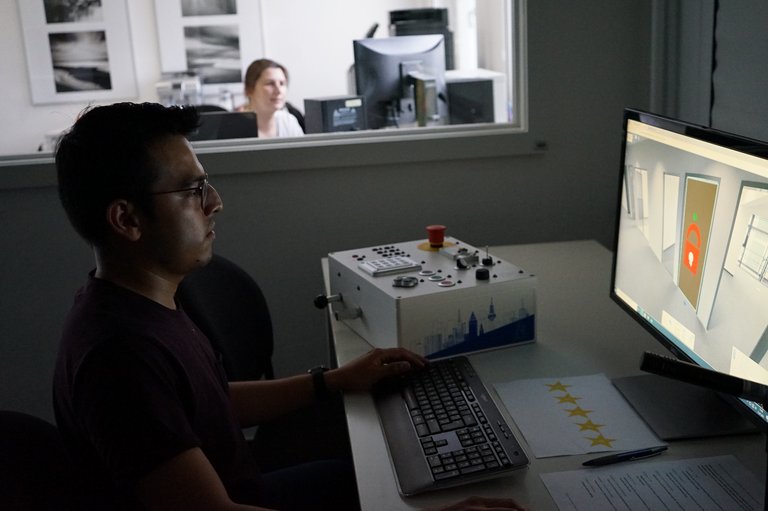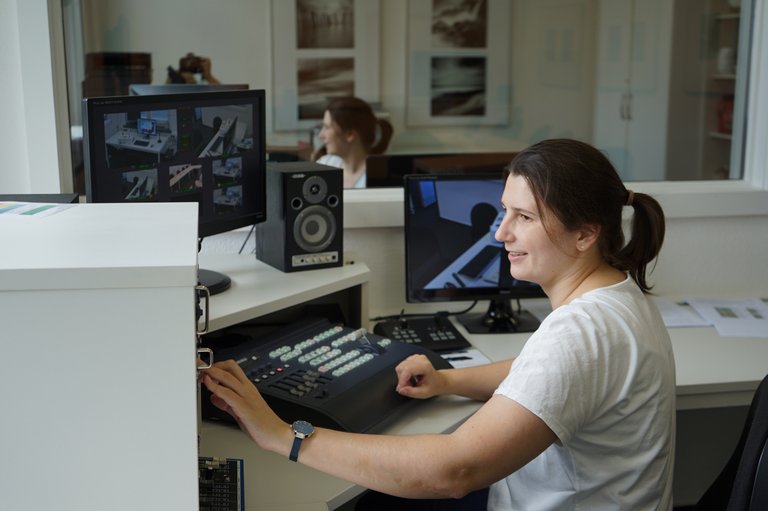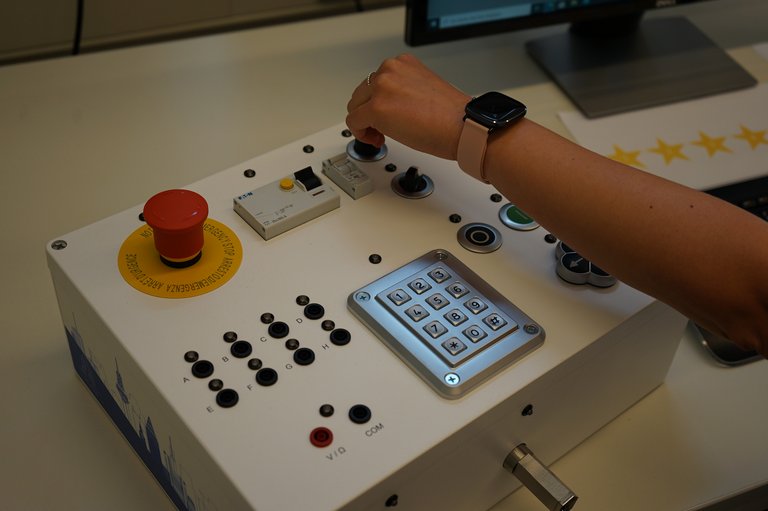Increasing digitalization in the construction industry is also making facility management tasks more complex and diverse, and is leading to ever higher demands on the professional qualifications of employees. At the same time, the problem of the shortage of skilled workers in this field is becoming ever more acute. The research team of the TU Ilmenau at the Group Media Production of Prof. Heidi Krömker, together with cooperation partners from industry, has now developed an immersive training environment for employees in facility services.

The learning and simulation environment can be adapted to the specifics of the buildings and enables janitorial, cleaning or maintenance staff to receive action-oriented training that is independent of location and time. This should enable them to better prepare themselves for building-related maintenance activities. The research and development project SiFaMat - short for Sensorically Supported Simulator for Training and Further Education in Facility Management Using Immersive Scenarios - was developed in the proTELT network together with the companies Archibus Solution Centers Germany GmbH, Bueren & Partner Software-Design GbR, mikrolab ENTWICKLUNGSGESELLSCHAFT FÜR ELEKTRONIKSYSTEME mbH and M.I.T e-Solutions GmbH. It was funded by the German Federal Ministry for Economic Affairs and Energy (BMWi) as part of the Central Innovation Program for SMEs (ZIM) for a period of two years.
In addition to project coordination, the tasks of the research team at the Ilmenau University of Technology included describing the requirements in a use-oriented manner with the help of personas and scenarios as well as developing sample solutions and functional prototypes of the user interface, i.e. the graphical user interface of the training environment. The Department of Media Production has more than 15 years of experience in human-technology interaction and the user-centered development of digital knowledge spaces.
Usability tests for optimal results
Various people from the target group then tested the usability of the learning environment as part of a usability study, including in particular people between the ages of 18 and 65 who work in facility management and have different expertise in the use of digital devices and professional experience, for example in maintenance, cleaning or environmental care.
Many students, staff members of the university also actively supported the tests and thus made the research and the usability tests possible in the first place," said project manager Cindy Mayas, who monitored the tests from the observer station of the Usability Lab in order to obtain optimal images and test results. "In this way, we wanted to explore: Which interaction types, feedback mechanisms and navigation principles are more pleasant and efficient for which target groups?

During the usability tests, the test persons moved through two virtual learning environments that were designed in such a way that they were perceived as real by the test person:
The virtual environment, in which subjects can move freely through the various rooms, is intended to enable people working in a wide variety of buildings in particular to orient themselves in the building in advance and learn the necessary tasks. In this way, these can be carried out more quickly and efficiently later on site and, at the same time, the processes on site are not disturbed during the training phase," explains Cindy Mayas. "This means that trainees should learn in advance, for example: what tools do I need to pack? What tasks do I need to perform on site?
The system uses 3D simulations, classic hardware and software, sensors, actuators, input and output devices and a graphical user interface. A customer-neutral knowledge database, which contains, among other things, legal regulations and device-dependent instructions, forms the generic data basis for the training offers.
Learn maintenance and servicing tasks specific to a building
The different components of the system as well as efficient editing tools thus make it possible to create an individual training offer for each building. This allows the trainees to learn their maintenance and servicing tasks in a building-specific manner. Through various feedback mechanisms, the training units are constantly enriched with the experiential knowledge of the trainees themselves. The learning environment is scalable in terms of content and supports action-oriented, intuitive training.

For example, to operate the fire alarm system, our Learn Cube is used on which the actions can be carried out in real life, i.e. exactly those elements are physically operated that can also be found later in reality. This facilitates learning and remembering, so that the learners can later perform the tasks in exactly the same way.
The research work in the SiFaMat project also involved students in the Media Technology course, who developed and tested various scenarios as part of their term papers in Usability Engineering. Based on this, Cindy Mayas and her colleagues Jacqueline Schuldt and Michael Reeßing were able to identify initial usability challenges at an early stage, which have been incorporated into the prototype that is being developed further.
Based on this prototype," says Cindy Mayas, "the project partners from the fields of hardware and software engineering, interior visualization, learning management systems and digital facility management can now carry out further technical system tests, test additional interfaces and interactions and then develop a user-friendly system.
More information on the project: www.sifamat.de
Contact
Prof. Heidi Krömker
Head Group Media Production

